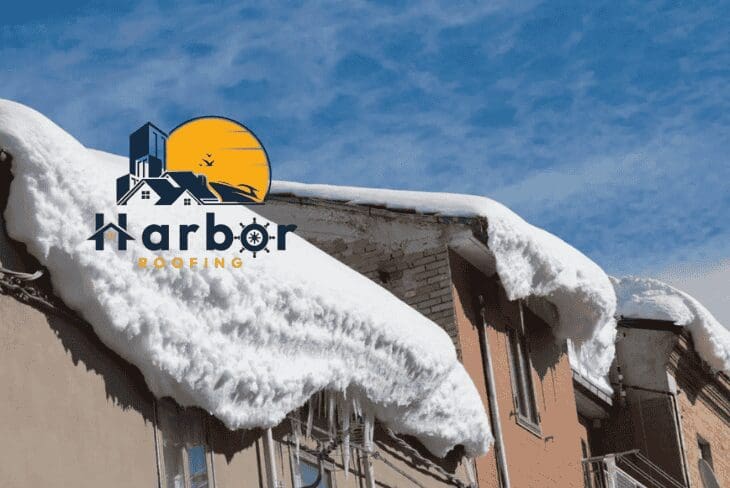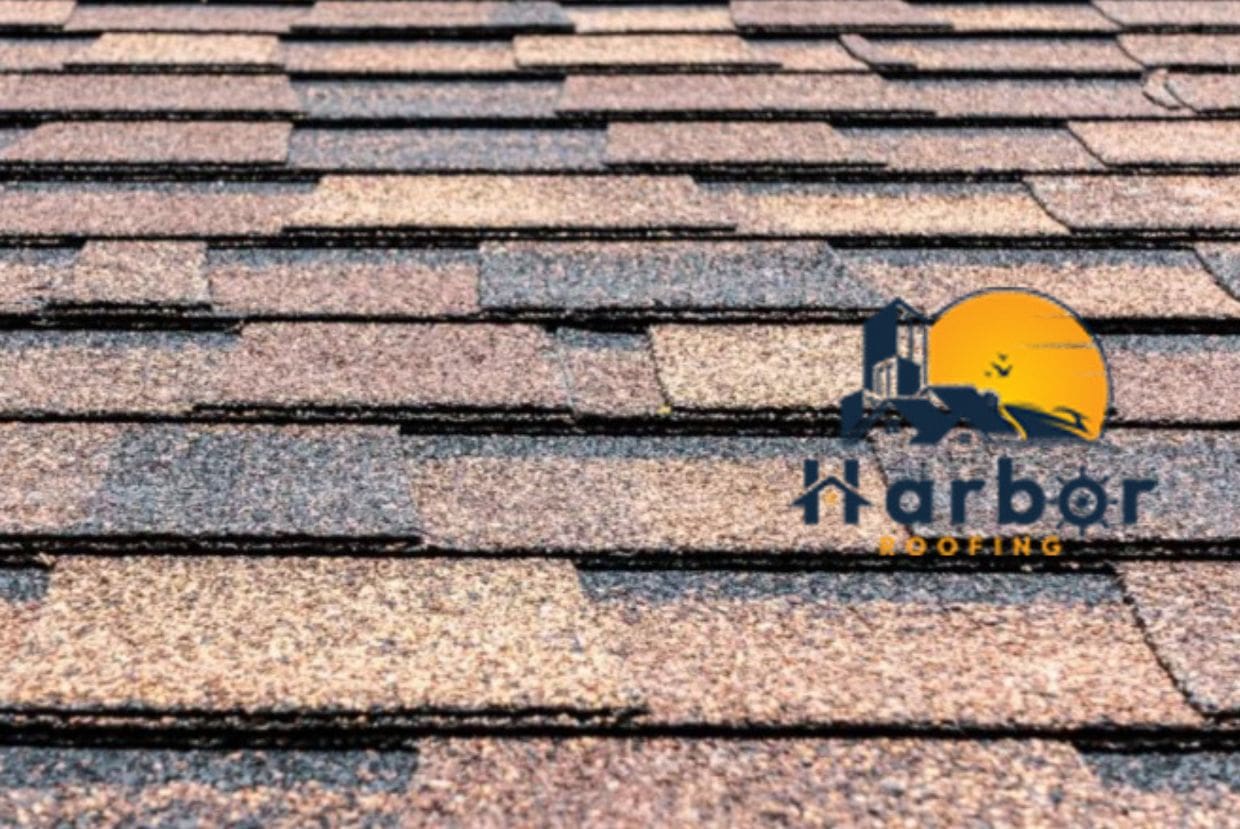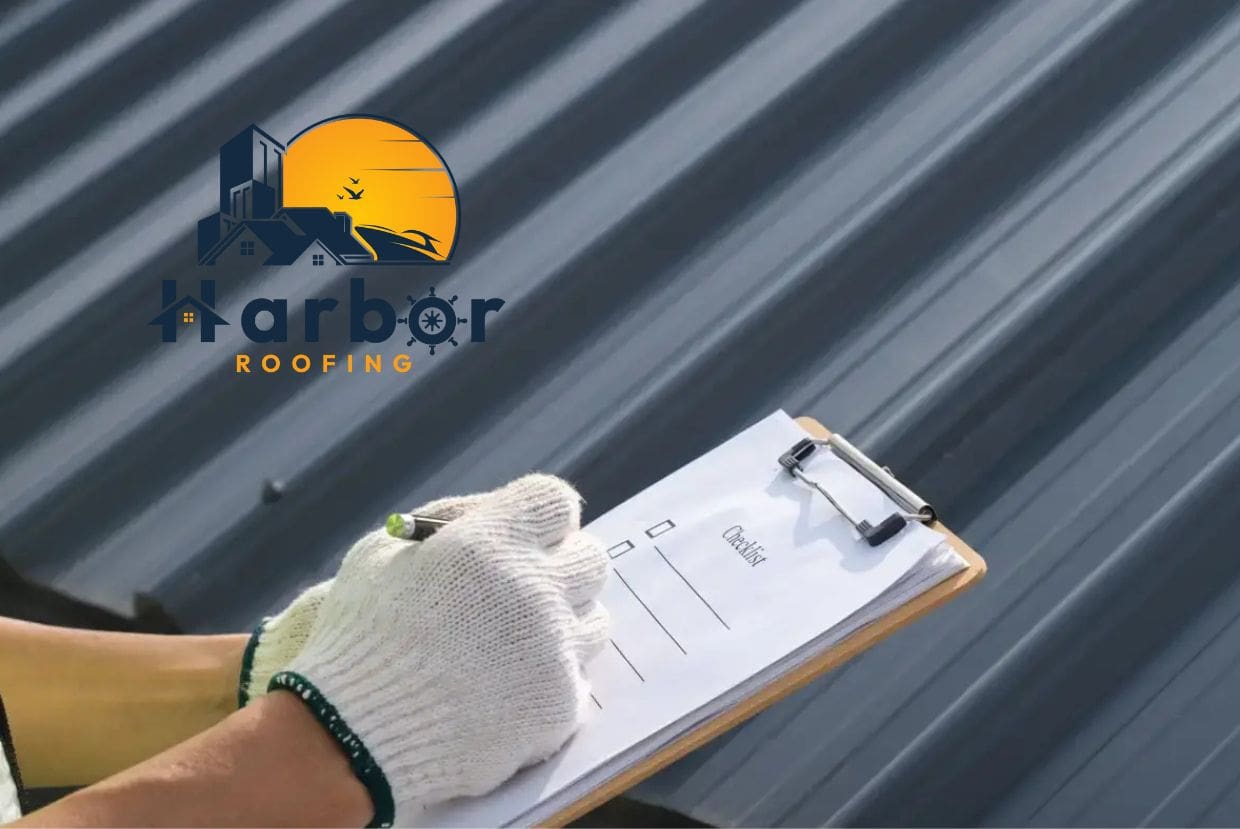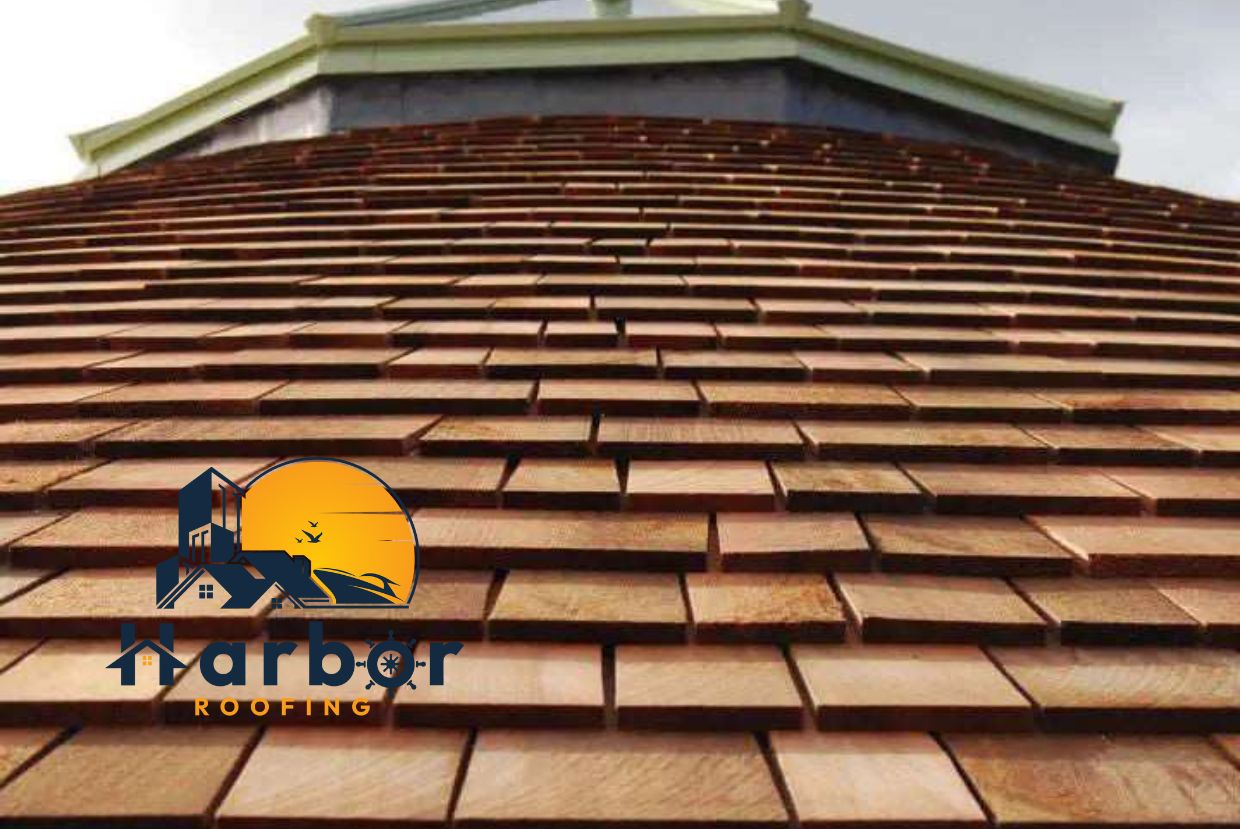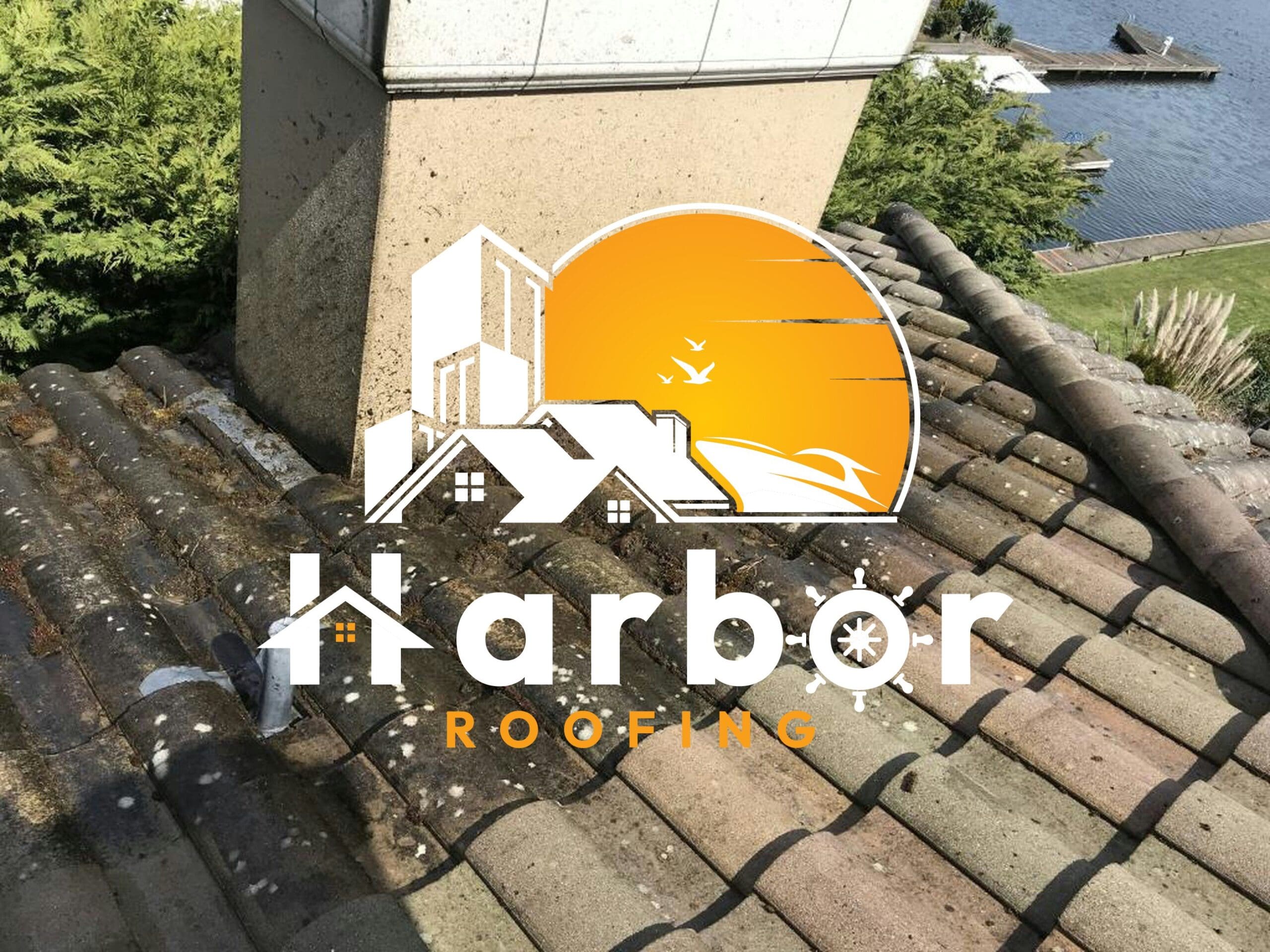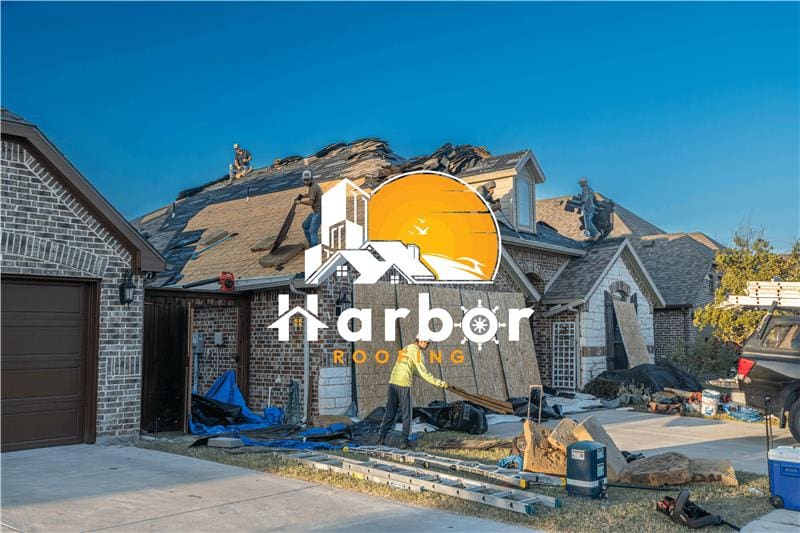Table of contents
- Why Flat Roofs Struggle in Cold Weather
- Risks of Ignoring Flat Roof Winter Maintenance
- How to Care for Your Flat Roof Before and During Winter
- Professional Vs. DIY Winter Roof Maintenance
- How Much Snow Is Too Much?
- Safe Snow Removal Techniques
- Best Roofing Materials for Winter Climates
- Flat Roof Winter Maintenance Checklist
- Conclusion
- Frequently Asked Questions
Winter can be generally brutal to roofs. However, it is more brutal to flat roofs. Unlike sloped roofs that naturally shed snow and ice, flat roofs require more attention during the winter months. Without proper care, they can collect heavy snow, form ice dams, and suffer water damage when the snow starts to melt. That’s why flat roof winter maintenance is essential.
Whether you’re a homeowner, property manager, or business owner, understanding how to protect your roof during freezing weather will save you time, money, and headaches down the line. This guide will walk you through essential flat roof winter maintenance, safe flat roof snow removal practices, and even which roofing materials are best for cold climates.
Why Flat Roofs Struggle in Cold Weather
Flat roofs may look sleek and modern, but when winter hits, they don’t always perform as well as their sloped equivalent. Here’s why:
- Water pooling and the freeze-thaw cycle: On a flat surface, water doesn’t always drain quickly. When temperatures drop, the standing water freezes and expands, creating cracks in the roofing material. As it melts and refreezes, the cycle continues and weakens the roof.
- Snow load and structural stress: Snow is a heavy load. A thick layer sitting on a flat roof puts pressure on the structure and can cause sagging, leaks, or even collapse if left unchecked.
- Ice dams: On pitched roofs, ice dams often form at the edges. On flat roofs, they can form anywhere, blocking drainage and forcing water to back up into the roof system.
Risks of Ignoring Flat Roof Winter Maintenance
Energy loss is a common issue that arises when you do not maintain your roof properly before and during winter. Such a roof can have gaps in insulation or hidden weak spots. This allows warm air to escape while letting cold air sneak in. This results in higher heating bills, uncomfortable indoor temperatures, and more strain on your HVAC system, which can shorten its lifespan.
One of the biggest risks is leaks and water damage inside your home or business. Snow and ice tend to sit on flat roofs longer than on sloped ones, and as they melt and refreeze, they can force water into even the tiniest cracks. Over time, this moisture seeps into ceilings, walls, and insulation, causing stains, structural damage, and potentially even mold growth.
Finally, neglecting winter maintenance often leads to premature roof failure. Your roof may only last half its lifespan if you repeatedly expose it to freeze-thaw cycles, standing water, and excess weight from snow buildup without a checkup. Replacing a roof years earlier than estimated is a significant financial setback that you can avoid with consistent upkeep.
How to Care for Your Flat Roof Before and During Winter
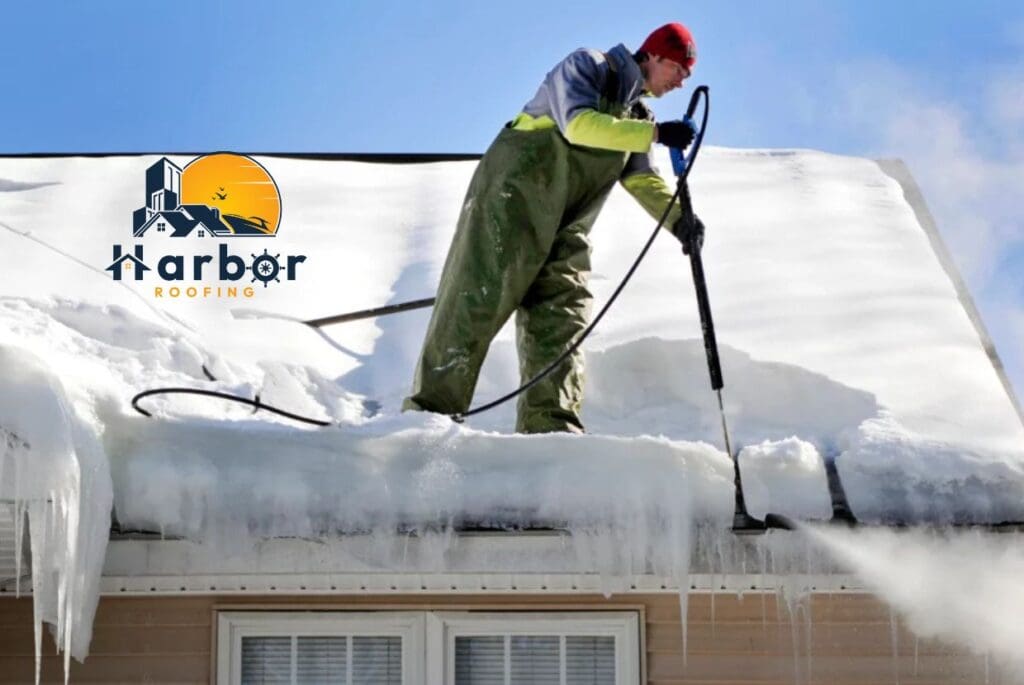
Roof Preparation Before Winter
The best time to prepare your roof for winter is before the first snowflake falls. Consider it a health check-up and do the following:
Schedule an inspection with a professional roofer to spot issues like cracks, loose seams, or weak spots.
Clear gutters and drains so melting snow has a clear path off your roof. Blocked drains can quickly turn into icy pools.
Trim overhanging branches that might drop snow, ice, or broken limbs onto your roof during a storm.
Routine Winter Maintenance
Once winter is in full swing, regular checks are your best defense.
- Monitor snow and ice buildup after every storm. Even a few inches can add surprising weight.
- Remove snow safely to reduce stress on the structure.
- Watch for leaks or sagging ceilings inside your home. These signs are red flags that your roof is under strain.
Professional Vs. DIY Winter Roof Maintenance
Some winter roof maintenance tasks are safe to handle on your own, while others are better left to the professionals. Homeowners can typically manage light jobs such as clearing snow with a roof rake or chipping away at small patches of ice. However, when it comes to heavier work like removing large amounts of snow, repairing damage, or addressing leaks, it’s best to call in the experts.
Professionals possess the necessary tools, experience, and safety equipment to safely navigate icy surfaces without causing further damage. While tackling everything yourself might seem like a money-saving move, a single slip on ice or an accidental puncture of your roof membrane can lead to far greater costs in the long run.
How Much Snow Is Too Much?
You might be wondering: how much snow can a flat roof actually handle? The answer depends on the structure, but as a general rule, if snow is more than two feet deep, it’s time to act. Signs of stress include:
- Sagging ceilings indoors
- Cracks in interior walls
- Doors or windows sticking from shifting frames
Different roofing materials also have varying levels of tolerance. Metal roofing is stronger than a membrane-only system, but even the toughest roof has its limits.
Safe Snow Removal Techniques
When it’s time to clear snow, safety is essential for both you and your roof.
Use the right tools: A plastic shovel or roof rake is best. Metal shovels can tear roofing membranes.
Shovel evenly: Remove snow in layers rather than digging down to the roof surface. It prevents accidental gouges.
Stay on the ground if possible: Long-handled roof rakes let you clear snow without climbing onto a slippery roof.
Common Mistakes to Avoid When Removing Snow
Many homeowners unintentionally damage their roofs while trying to protect them. Avoid these common errors:
Over-shoveling: Scraping all the way down to the membrane increases the chance of punctures. Leave a thin layer of snow as a cushion.
Uneven clearing: Removing all snow from one side only can cause uneven stress. Make sure you aim for balance.
Using salt or chemicals: Using salt or chemicals can corrode roofing materials and harm surrounding landscaping.
Best Roofing Materials for Winter Climates
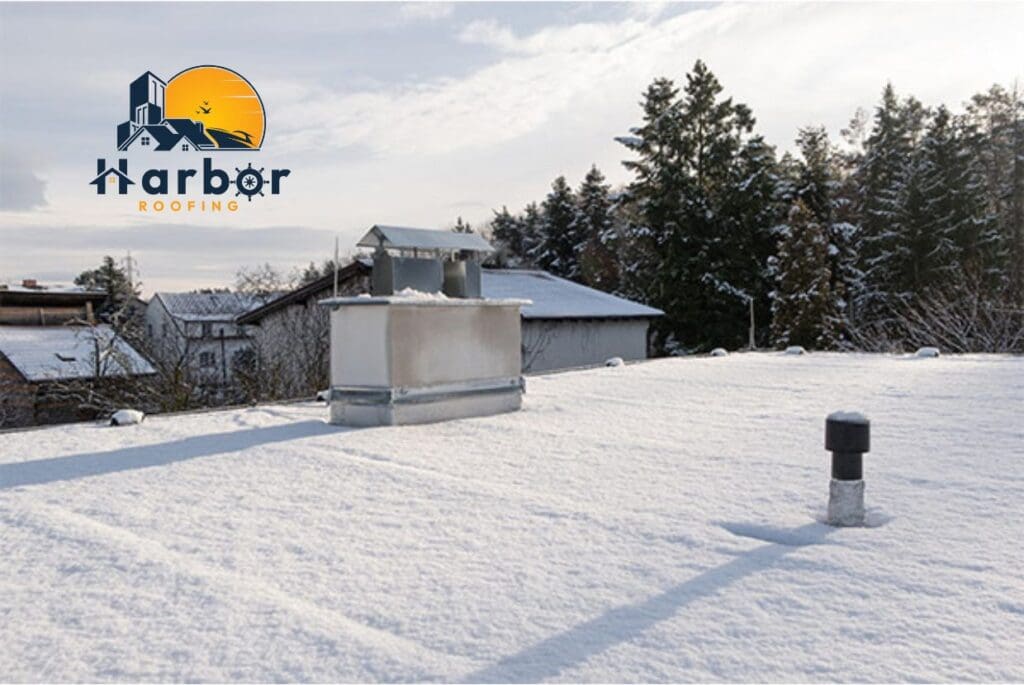
If you’re considering a roof replacement or upgrade, selecting the right material can make a significant difference in cold climates. Here are some of the best options when properly specified and installed:
Modified Bitumen: Particularly SBS-modified versions are durable, flexible, and designed to handle freeze-thaw stress. Its performance depends heavily on the modifier, reinforcement, and cold-weather installation methods.
EPDM Rubber Roofing: Maintains flexibility at low temperatures, resists cracking, and remains waterproof through cycles of freezing and thawing, especially in flat or low-slope roofs.
TPO Membranes: Can be energy-efficient and durable in varying temperatures, although quality, thickness, and reinforcement affect cold-weather performance.
Metal Roofing: Very strong and long-lasting, it excels at shedding snow when the slope or pitch allows for adequate drainage. However, flat or near-flat metal roofs require very careful design to avoid drainage, seam, or water pooling problems.
Flat Roof Winter Maintenance Checklist
Here’s a quick checklist to keep handy every winter:
- Inspect the roof before the first snowfall of the season
- Clean gutters and drains
- Trim overhanging branches of nearby trees
- Check the roof after each major snowstorm
- Safely remove snow by getting professional help or by using a rake
- Watch for signs of leaks indoors
- Schedule a mid-winter inspection if your area gets heavy snow
- Inspect again in spring for any winter damage
Conclusion
Flat roofs may require more attention in winter. However, when you observe the needed maintenance and roofing materials, they can withstand even the harshest cold climates.
Remember, winter doesn’t have to be a terrible experience for you and your family. With proper flat roof winter maintenance, safe snow removal, and the right roofing materials designed for snow and freezing temperatures, you can keep your home warm, dry, and secure all season long.
Frequently Asked Questions
How often should I clear snow from a flat roof in winter?
After every heavy snowfall, check the depth. If it’s over a foot, start planning to remove it. For lighter snow, monitor and clear when it reaches a depth of two feet.
What is the safest way to remove ice from a flat roof?
Avoid chisels or chemicals. The best approach is gentle mechanical removal with a roof rake, or call a professional for stubborn ice dams.
Can a flat roof collapse from too much snow?
Yes. While most are designed to hold a certain weight, excessive snow and ice can cause sagging, leaks, or even collapse in extreme cases.
Is roof heating necessary for flat roofs in cold climates?
Roof heating systems can help prevent ice buildup and improve drainage. While they’re an added investment, they can save you from costly repairs over time.

